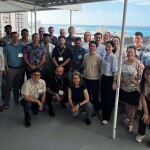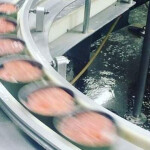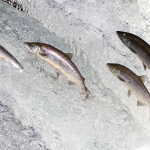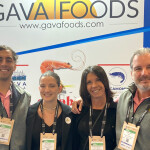Norwegian land-based salmon-farming firm Salmon Evolution has posted positive earnings for Q1 2024, a first for the company in a quarterly period.
The company, which runs a hybrid flow-through salmon farm at Indre Harøy on the west coast of Norway, reported NOK 98.2 million (USD 9 million, EUR 8.4 million) in revenue in Q1 2024, up 14 percent from the NOK 85.8 million (USD 7.8 million, EUR 7.3 million) it posted in Q4 2023. Alongside the revenue increase, Salmon Evolution posted operational earnings before interest, taxes, depreciation, and amortization (EBITDA) of NOK 36.2 million (USD 3.3 million, EUR 3 million) in Q1 2024, a positive surge from the NOK 43,000 (USD 3,900, EUR 3,600) it posted in Q4 2023.
In addition to the increase in EBITDA, Salmon Evolution posted an operational EBIT of NOK 18.2 million (USD 1.6 million, EUR 1.5 million) in Q1 2024, up from the loss of NOK 16.7 million (USD 1.5 million, EUR 1.4 million) it posted in the prior quarter.
“At Salmon Evolution, we have a vision to grow salmon on land with excellent biology in a highly profitable way,” Salmon Evolution CEO Trond Håkon Schaug-Pettersen said in a release. “The strong results in the first quarter are a testament to this and truly demonstrate that Salmon Evolution has established a unique, efficient, and profitable growth platform. We are only at the start of our journey.”
The farming EBITDA also came with an EBITDA-per-kilogram of NOK 40.20 (USD 3.68, EUR 3.43), from a price realization of NOK 108 (USD 9.90, EUR 9.21) per kilogram of salmon. The company said in an earnings presentation it is “consistently outperforming” Nasdaq benchmark prices for its superior-grade fish. Its April harvest volume of 600 metric tons (MT) of head-on gutted (HOG) salmon achieved an “industry-leading” rate of 96 percent superior grade, it said.
The company’s total harvest in Q1 2024 amounted to 901 MT HOG, and the company expects to harvest between 1,600 MT and 1,800 MT of HOG salmon in Q2 2024.
The harvests came as the company said it achieved a record-high standing biomass of nearly 2,700 MT live weight at the end of Q1 2024, due to net biomass growth of 1,560 MT – up 8 percent from Q4 2023.
The company posted a solid quarter but said it received poor smolt quality in the quarter and that it has reduced its stocking volume for its latest batch of smolt.
“This highlights the need for stable delivery of high-quality smolt all year round, particularly during the cold winter season, where challenges with respect to the smoltification process typically are an issue,” the company said. “The company has already taken several actions to address this. Furthermore, the company has secured overcapacity on smolt through external sourcing and will upsize stocking volumes in Q2, minimizing the impact on future harvest volumes.”
As it sees success with the first phase of its Indre Harøy facility, the company said it is also seeing inflationary pressure on the capex required for its Phase 2 construction. The company selected Artec Aqua as the contractor for the phase, which it said will be an improved copy of its Phase 1 facility.
“The project is proceeding as planned, and the ambition is to take the final investment decision in Q2 2024 and initiate construction after the summer holiday,” Salmon Evolution said.
The company added that it is continuing its site search for a new land-based salmon facility in North America, claiming that a North American expansion is essential to bringing the group’s total salmon production to 100,000 MT HOG.
“Salmon Evolution is currently in advanced negotiations on a high-potential site in North America,” the company said. “The initial site verification processes, including fatal flaws analyses of water, biological, technical, and regulatory aspects, points to this being an ideal site for a hybrid flowthrough system.”
As the company narrowed its search in North America, it was seeing cost challenges at its South Korea site. The lack of existing salmon-farming infrastructure and regulatory frameworks in the country have impacted the project’s construction and operating costs, it said.
Looking forward, the company’s board said the outlook of Salmon Evolution is strong now that it has managed to reach profitability for the first time.
“Having a strong operational and financial proof of concept is an ideal backdrop to continue scaling the company further in Norway and abroad,” the company said.








